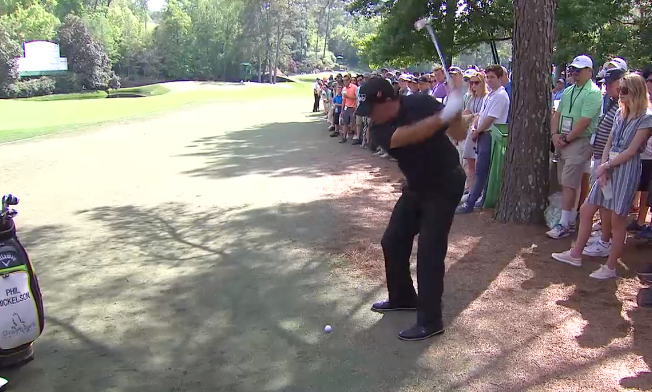AUGUSTA, Ga. — Pssst, here’s an Augusta National secret: If you’re going to hit a bad drive at the bruising par-4 11th, hit a really bad drive.
Ask Tiger Woods. When Woods pushed his tee shot at 11 during the third round of the Masters, he begged it to keep leaking. “Get right!” he barked. That’s because right of the stand of trees that line the right side of the fairway, there’s a narrow opening. Call it White Dogwood Pass.
Back in the 1930s, Alister MacKenzie and Bobby Jones’ designed the 11th with a nearly 100-yard-wide fairway that presented golfers with options: Depending on where the hole was cut, players could either play up the right or left side of the fairway to leave themselves a favorable angle into the green. That changed in 2004 when the club cut the width of the fairway in half by adding a new cluster of trees down the right side of the hole, an addition traditionalists loathed. In 2011, the club further tightened the screws on the 11th by stretching it to 500-plus yards. The end result was one of the most demanding tee shots in golf.
The fairway is still position A, of course, but as Woods demonstrated Saturday, a wild miss right trumps a plain old miss right. Check out this graphic and photo:


As you can see, the pines are jail. But just right off the trees, there’s a narrow opening that leaves players an unimpeded look at the green. If the hole is cut on the left of the side of the green, this chute provides a perfect angle to the green — a better angle, in fact, than players would have from the left side, or even the middle, of the fairway.
Phil Mickelson also took (unintentional) advantage of his loophole in the third round. When Mickelson hit a wicked hook on 11, he found his ball in the same channel of daylight where Woods’ ball had landed, about 150 yards from the green.


Both players took advantage of their fortuitous lies and hit short-iron approaches safely to the putting surface, from where they made no-worries pars.
Simple, right? Maybe too simple. As the green coats continually look for ways to toughen up their course, don’t be surprised if one day White Dogwood Pass magically disappears.






